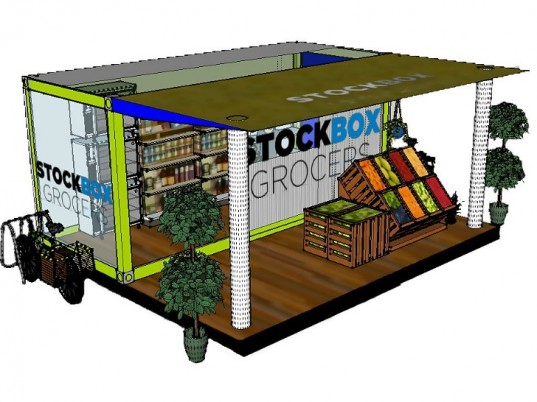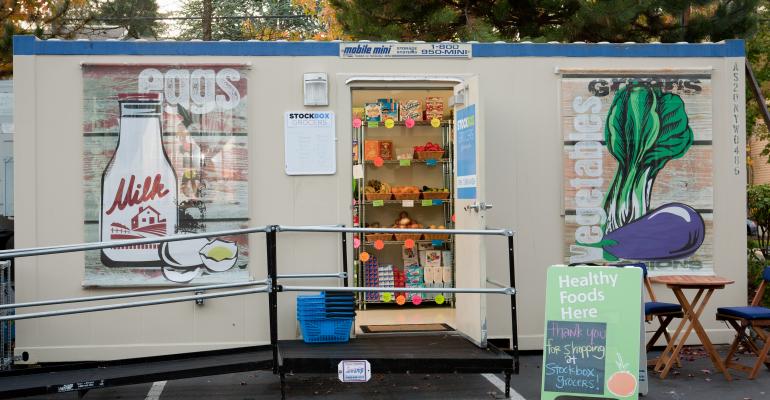Wal-Mart, Supervalu and ShopRite are just a few of the many national and regional supermarkets that have committed to bringing fresh, healthful foods back to neighborhoods where the nearest store is measured in impossible miles. The campaign to repair the nation’s food deserts is well underway, but good intentions can take time as store-building projects wend their way through the siting, zoning and construction process. In the meantime, nimble startups like Stockbox Grocers in Seattle are worth watching for the unique ideas they bring to these underserved areas. Chief among them: Why not sell it all out of a shipping container? Co-founder Carrie Ferrence explains.
Stockbox Grocery’s pilot store operated out of a shipping container placed in the parking lot of a housing project. Why?
We were really looking for ways to minimize our setup and operating costs. That’s really one of the bigger reasons why grocery stores and convenience store aren’t serving these communities with good food. By directly addressing the limitations of competitors, we were able to put a bigger focus on the food itself, to focus on the food that isn’t being provided like produce and healthy grocery staples.
 So apples, oranges, and other produce items mostly?
So apples, oranges, and other produce items mostly?
We’re not just focusing on produce. We’re focusing on fresh food and the food that people purchase most frequently in between large grocery trips. We can’t replace a 40,000 square foot store, but what we can do is provide the items that people run out of most frequently to get them in between the larger trips
What was the demand like during the three-month trial?
We were surprised by the demand for produce. I think sometimes food desert communities it’s assumed they aren’t looking for fresh and healthy food, and we learned that there is a lot of pent-up demand for it.
Were people hesitant at all? What did they think when they suddenly saw this shipping container full of food?
We would often find people standing 20 feet away from the store, just staring at it. We would have to literally invite them into the space. I think that’s just something that, when you’re promoting a different concept like that, you have to put that much more effort into creating a bridge.
Will outreach be a bigger part of the business plan going forward?
We had been building relationships with community groups prior to opening the prototype store, but we are expanding our work with other nonprofits to expand education. We also want to get the word out to more diverse communities, as well. So we’re expanding our ability to communicate in different languages and use different messages.
What’s the rollout plan for this year?
We are hoping to get the first store off the ground in May, and then get a second store off the ground later in the year. So the goal is for two stores in 2012. We are still finalizing the financing and the location, but we have most of our suppliers in line. We can roll a store out pretty quickly once we get the financing in line.
How many products will the stores carry?
The prototype we had 300 unique SKUs. We will probably have a little bit more in our permanent stores once we get the first one off the ground. We’ll probably have closer to 400 SKUs.
So why start a supermarket like this and not a mobile market, as so many others are doing in food deserts?
Stockbox initially started as a mobile market. But we quickly changed it to be a more permanent model based on the analysis we did of existing mobile markets. Several of them have failed and several have only stayed in existence as a nonprofit model. When we looked into why, we discovered the reason is communities couldn’t depend on them. If you run out of milk or you run out of produce and the truck doesn’t come by for a couple days, it’s not really responding to the fundamental need for access. So we wanted to make something really dependable and really accessible in the community
I read you’ve been getting calls from people interested in franchising?
We’re surprised to see how much support there has been for this idea. I think we see people all over the country seeing an opportunity for this to work. Everyone has parking lots, everyone has shipping containers. These are resources that can be adapted to work in most urban environments.

